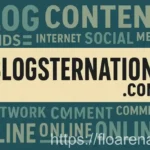Key Takeaways:
- Real-time transcription is revolutionizing communication by providing accurate text transcripts in real-time.
- It enhances accessibility for individuals with hearing impairments and improves productivity by enabling multitasking during meetings/calls.
- Leading tech companies like Google, Microsoft, and Amazon are driving advancements in real-time transcription through machine learning and natural language processing.
- The rise of remote work and virtual meetings has accelerated the adoption of real-time transcription tools.
In today’s fast-paced digital age, effective communication is more crucial than ever. As businesses strive to stay competitive and organizations aim to foster inclusivity, the need for seamless and accessible communication has become paramount. Enter real-time transcription, a game-changing technology that is transforming the way we communicate, collaborate, and share information.
Bridging the Gap: Real-Time Transcription and Accessibility
One of the most significant benefits of real-time transcription is its ability to enhance accessibility for individuals with hearing impairments. By providing accurate text transcripts in real-time, this technology enables individuals who are deaf or hard of hearing to actively participate in conversations, meetings, and events without missing a beat. This not only promotes inclusivity but also fosters a more productive and collaborative work environment.
Moreover, real-time transcription can be a valuable tool for individuals with auditory processing disorders, language barriers, or learning disabilities. By having access to visual transcripts, they can better comprehend and engage with spoken content, fostering a more inclusive and equitable communication experience.
Multitasking Made Easier: Enhancing Productivity
In today’s fast-paced work environments, multitasking is often a necessity. However, attempting to take notes while actively participating in a meeting or conference call can be a daunting task, leading to decreased productivity and potential missed information. Real-time transcription solves this problem by providing accurate and detailed transcripts in real-time, allowing participants to focus on the conversation while still capturing essential information.
Furthermore, having a searchable and shareable transcript can greatly enhance collaboration and knowledge-sharing within teams. Instead of relying on potentially incomplete or inaccurate notes, team members can reference the comprehensive transcript, ensuring that vital information is not lost or miscommunicated.
The Driving Force: Machine Learning and Natural Language Processing
The rapid advancements in real-time transcription technology can largely be attributed to the cutting-edge developments in machine learning and natural language processing (NLP). Leading tech giants like Google, Microsoft, and Amazon have invested heavily in these fields, resulting in highly accurate and efficient transcription models.
| Company | Transcription Service |
|---|---|
| Google Live Transcribe | |
| Microsoft | Microsoft Translator |
| Amazon | Amazon Transcribe |
These models leverage vast datasets and sophisticated algorithms to recognize speech patterns, filter out background noise, and accurately transcribe spoken words into text in real-time. As these technologies continue to evolve, we can expect even greater accuracy and capabilities in the realm of real-time transcription.
The Rise of Remote Work and Virtual Meetings
The COVID-19 pandemic has accelerated the adoption of remote work and virtual meetings, further fueling the demand for real-time transcription tools. With teams dispersed across different locations, the ability to seamlessly communicate and collaborate has become paramount.
Real-time transcription not only enables effective communication during virtual meetings but also provides a detailed record of discussions, action items, and decisions made. This ensures that everyone stays on the same page, regardless of their location, fostering a more cohesive and productive remote work environment.
Embracing the Future of Communication
As we move further into the digital age, the demand for real-time transcription is only set to increase. With its ability to enhance accessibility, improve productivity, and facilitate seamless communication, this technology is poised to become an indispensable tool for businesses, organizations, and individuals alike.
However, it is important to note that real-time transcription is not a one-size-fits-all solution. Different industries and use cases may require tailored approaches and specialized vocabularies to ensure accurate transcription. As such, ongoing research and development in this field will be crucial to address these unique needs and continue pushing the boundaries of what is possible.
In conclusion, the rise of real-time transcription is transforming the way we communicate, collaborate, and share information. By breaking down barriers and fostering inclusivity, this technology is paving the way for a more accessible and equitable digital landscape. As we embrace this revolutionary tool, we can look forward to a future where communication knows no bounds, and the exchange of ideas flows seamlessly, regardless of individual abilities or circumstances.






